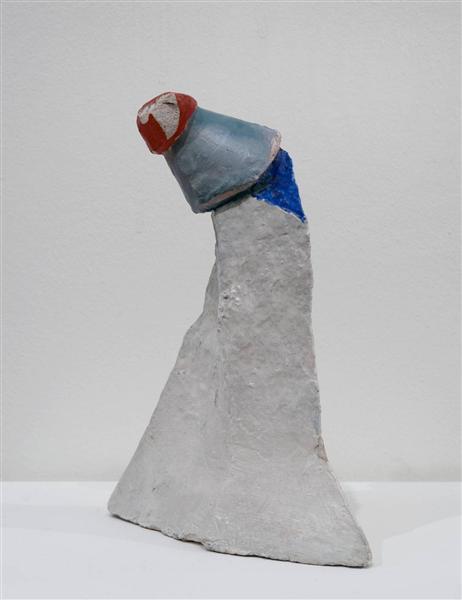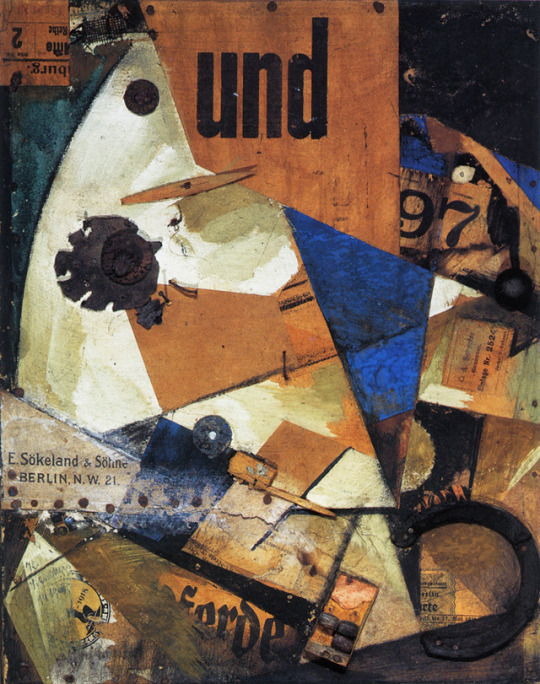Text
Bibliography
The Print Collector's Newsletter 9, no. 6 (1979): 196. http://www.jstor.org/stable/44130517.
Steinitz, Kate T. "Kurt Schwitters: A Portrait from Life." Comparative Literature Studies 12, no. 3 (1975): 199-217. http://www.jstor.org/stable/40246133.
Heine, Werner, and Annette Haxton. "'Futura' without a Future: Kurt Schwitters' Typography for Hanover Town Council, 1929-1934." Journal of Design History 7, no. 2 (1994): 127-40. http://www.jstor.org/stable/1316081.
McBride, Patrizia C. "Abstraction and Montage in the Work of Kurt Schwitters." In The Chatter of the Visible: Montage and Narrative in Weimar Germany, 148-77. Ann Arbor: University of Michigan Press, 2016. http://www.jstor.org/stable/j.ctt1gk08k8.11.
Helms, Dietrich, and Lydia Dorner. "The 1920's in Hannover: An Exhibition in Hannover, Germany." Art Journal 22, no. 3 (1963): 140-44. doi:10.2307/774437.
Hilberseimer, Ludwig, and Howard Dearstyne. "Observations on the New Art." College Art Journal 18, no. 4 (1959): 349-51. doi:10.2307/774030.
Clarkson, Austin. "Lecture on Dada by Stefan Wolpe." The Musical Quarterly 72, no. 2 (1986): 202-15. http://www.jstor.org/stable/948119.
"Back Matter." Performing Arts Journal 11, no. 1 (1988): 97-102. http://www.jstor.org/stable/3245603.
Nantell, Judith. "Alberti's Yo Era Un Tonto Close-up: The Keatonesque Fool." Anales De La Literatura Española Contemporánea 6 (1981): 141-59. http://www.jstor.org/stable/27741558.
Donnelly, Brian. "The Inversion of Originality through Design." RACAR: Revue D'art Canadienne / Canadian Art Review 40, no. 2 (2015): 146-60. http://www.jstor.org/stable/43632238.
Ballstaedt, Andreas. Neue Zeitschrift Für Musik (1991-) 155, no. 3 (1994): 64. http://www.jstor.org/stable/23985738.
Thomson, Philip. "A Case of Dadaistic Ambivalence: Kurt Schwitter's Stramm-Imitations and 'an Anna Blume'" The German Quarterly 45, no. 1 (1972): 47-56. doi:10.2307/403645.
Low, Jackson Mac. ""9th Merzgedicht" in Memoriam "Kurt Schwitters"" Conjunctions, no. 13 (1989): 90-114. http://www.jstor.org/stable/24514984.
Stone, Tim. "Two Birds with One Stone: A Reply." Archaeology in Oceania 26, no. 1 (1991): 26-28. http://www.jstor.org/stable/40386866.
Michelson, Annette. "De Stijl, Its Other Face: Abstraction and Cacaphony, or What Was the Matter with Hegel?" October 22 (1982): 5-26. doi:10.2307/778361.
Ades, Dawn. The Burlington Magazine 128, no. 997 (1986): 301-290. http://www.jstor.org/stable/882476.
Joris, Pierre. "[Nomad Century Ahead]." Boundary 2 26, no. 1 (1999): 152-55. http://www.jstor.org/stable/303882.
Hamilton, George Heard. "Exhibition of Contemporary Sculpture." Bulletin of the Associates in Fine Arts at Yale University 14, no. 2 (1946). http://www.jstor.org/stable/40513504.
Craft, Catherine. "Schwitters and Arp. Basel." The Burlington Magazine 146, no. 1216 (2004): 488-89. http://www.jstor.org/stable/20073630.
Schwitters, Kurt, Pierre Joris, and Jerome Rothenberg. "The Onion: Merzpoem 8 (1919)." Grand Street, no. 41 (1992): 166-74. doi:10.2307/25007539.
0 notes
Photo

Kurt Schwitters’ ‘The Clown’ 1947
This worked is listed as a mixed media object though the primary mediums appear to be plaster, wood, and paint with dimensions 195 x 152 x 60 mm. It is currently housed in the Tate, Britain long term loan from the collection of Geoff Thomas since 1991. This work is strongly rooted in Dadaist tradition as the separate components of the sculpture appear completely ambiguous when looked at separate from the sculpture as a whole and the construction appears to have to clear rationale other than chance. The sculpture’s form seems to have no clear figurative or subjective identity. Though the minimal application of color seems to just barely pull the sculpture together into something that can be imagined as ‘The Clown’ that the title suggests. Of course we can not know for sure if the title convinces us of this association with a Clown, or if we would make this association based on a ‘cold read’ without actually doing so and not knowing the title. The viewing experience as well as the sculpture’s making is related to Surrealism through the many steps of free association that the artist takes us through to reach the conviction that the very specific title suggests. This process could be looked at as a three dimensional automatic drawing in that the artist started a process and every next step is based on intuition with no planning. We are convinced that the artist found ‘The Clown’ as much as we the viewer has.
0 notes
Photo

Kurt Schwitters’ Anything With A Stone 1941-44
This piece is a mixed media collage primarily using found objects found by the artist in the area surrounding his home in Hamburg, Germany and using paint to add color and composition. It is currently in the collection of the Tate, Britain. As the title Anything with a Stone suggests, anything that the artist came across and was interested in has come into this composition with the stone. The randomness of the found objects is highlighted by the title while the stone is given a sense of belonging by the title. This may suggest that the stone is the only element that truly belongs in this context. That of all the random objects and trash that end up on the streets of urban environments, a stone is the only thing not out of place.
0 notes
Photo

Kurt Schwitters ‘The And Picture’ Mixed Media Collage, 1919.
Kurt Schwitters’ The And Picture (Das Undbild) 1919.
This work is a mixed media collage. It is currently in the collection of the Georges Pompidou Center, Paris, France. The artist collected the collaged elements from the area surrounding his home in Hamburg, Germany. This process is strongly rooted in the surrealist mindset in that the artist is tapping into the collective unconscious of the society he lives in during his particular moment. He does this through the found objects of the every day street trash; the neglected, the repressed, and the forgotten. These objects represent the subconscious of the material culture at the particular time. The artist places these items in a place of importance; giving them a new life. But the objects have come to the artist by chance; thus finding him as much as he has found them. According to Dadaist theories, the random scattering of of street trash has a rationale all it’s own. It fell in a particular place at a particular time and it is up to the artist to notice and respect this as a meaning in itself.
0 notes
Photo

Kurt Schwitters (1887-1948) Born in Hamburg, Germany.
0 notes